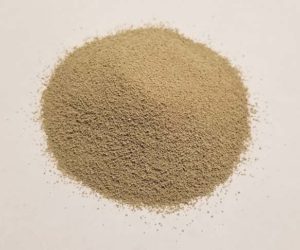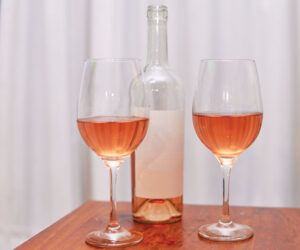
Q
How can I increase the sugar content and body of my juice without using refined sugar? I am looking for cheaper alternatives. Please point me to specific recipes.
Azubuike Ogala
Oxford, New Jersey
A
If you’ve seen a lot of home winemaking recipes that recommend pounds upon pounds of refined sugar, it’s because refined sugar is the cheapest agent available to home winemakers who want to raise specific gravity. If you happen to be a beekeeper or know one with whom you could trade a few bottles of wine for a few pounds of honey, for instance, I’d say your chances of getting cheap honey (which is a great sugar source for wines and meads) are pretty good.
Other sources of fermentable sugars that won’t necessarily cost you an arm and a leg are malt, grape concentrates, fruit juice concentrates and dried fruits. However, on a pound-for-pound average, all of these sugar sources will most likely cost you more than that five-pound bag of sugar that you can pick up at your local supermarket.If you happen to have a good, cheap source of any of the above, go ahead and use them to replace some or all of the refined sugar in your recipes. Just be aware that you’ll be imparting the flavor of that sugar source to your wine. Since honey, concentrates and dried fruits all vary in the amount of sugar they contain, it’s difficult to say how much you’ll need to use.
Just add more or dilute until you get the desired degrees Brix you’re looking for. For a table wine, you’ll want to start off with a Brix of between 21° to 24°. If you’re looking for residual sweetness in wine and don’t want to do it with refined sugar, try adding glycerin to your finished wine. It’s non-fermentable and will give your wine a pleasing body, as well. Use no more than one ounce per gallon and add according to taste. It’s more expensive than sugar, but you only use a little bit. Here’s a simple mead recipe that uses no refined sugar:
Ingredients:
- 4 lbs. (1.8 kg) honey
- 1/2 tsp. tannin powder
- 2 tsp. citric acid
- 1-1/2 tsp. yeast nutrient
- 1 packet sherry-type yeast
Step by Step:
Prepare the yeast starter in advance to activate the yeast. Suspend yeast in 1/2 cup of warm water (100 °F/37.8 °C), until bubbly. Place honey in the initial fermentation vessel or bucket and fill up to 1 gal. with hot water. When cool (70 °F/21.1 °C) add the tannin, nutrient and acid, and stir well to dissolve, then add the activated yeast. Cover closely. After seven days, transfer to a demijohn, topping up to the shoulder with cooled, boiled water if necessary. Fit bung and airlock and keep in a warm place. Ferment to completion. Rack from the lees when mead is star-bright. (Recipe courtesy of Step by Step Homemade Wine by Judith Irwin, Quadrillion Publishing Inc.)
Q
Since I couldn’t find fresh grapes, I decided to try a wine kit. The wine turned out pretty well, but the problem is that after my wife drinks about half a glass of it, she starts getting a headache. I was wondering if you could tell me what all those chemicals that come with the kits (sulfite, sorbate, bentonite, kieselsol) are for and if it’s necessary to use them?
Alan Brown
Harrodsburg, Kentucky
A
Your question is complex. In fact, it could lead to pages upon pages of response if I elucidated upon “all those chemicals” (and many of them are not really chemicals) that come in the majority of wine kits. Over the years, wine kits have had any number of additives, preservatives and fermentatives included in the package, not all of which are compatible for everyone who ingests them.
Individuals who lack the digestive enzyme sulfide oxidase should not ingest anything containing sulfites, such as wine, processed meats or dried apricots. Only about 0.001 percent of the population lacks this enzyme and most individuals who have this problem already know to shy away from such foodstuffs. In America, sulfites are required to be listed on the label as an ingredient. In the correct amounts, sulfites are safe for the majority of the wine (and sausage, cheese and fruit-consuming) public.
Even though a kit might contain unfamiliar ingredients, there really isn’t anything that is going to make you sick, if used according to the manufacturer’s directions. All of those little packets and vials are there for a reason — to make the wine turn out the best that it can.
To tackle some of the “chemicals” you mentioned: Sulfites: Sulfites are included as a preservative and antioxidant. As I said above, sulfites are not dangerous to the vast majority of us in small concentrations. It should be known that yeast cells naturally produce sulfites as a result of an alcoholic fermentation, so it’s really quite impossible to make a sulfite-free wine. All we can do is avoid putting too much in. If you don’t want to use sulfites in your wine, you will have to work extra hard to keep dangerous microbes and oxygen out of it.
Sorbate: Winemakers and kitmakers use sorbates, usually in a soluble form like potassium sorbate, to inhibit yeast before it starts fermenting. It’s likely that the sorbate you’re reading about on the label is dissolved into the kit concentrate to keep it from fermenting before it gets to you. Sorbate is an extremely common chemical preservative that’s widely used in food and beverage industries worldwide. In France, sorbate levels are limited to 200 mg/L, though more for sensory reasons than any health concerns. It tends to have an odor described by some as “celery” or “pineapple” and isn’t usually used in the making of fine wines. You certainly don’t have to add it, though you must practice meticulous sanitation if you don’t. To be on the safe side, I recommend for novice winemakers to use potassium sorbate. When making sweet wines without potassium sorbate, fermentation can restart and can cause the bottle to explode.
Bentonite: Bentonite is a naturally-occurring clay that has been used in winemaking for centuries. It pulls proteins and other positively-charged items out of finished wine and juices, letting them settle to a layer of sediment at the bottom of a carboy or tank, clarifying as they go. Bentonite is totally harmless and can be cut out of the program if desired – just be aware that you might need to spend a longer time settling your juice or wine and that you might encounter protein hazes later on.
Kieselsol: Kieselsol is a proprietary name for a fining agent belonging to the class of silica dioxides and has an action very similar to that of bentonite. Silica dioxides electrostatically bind with positively charged proteins in wine and initiate flocculation and settling. This means that adding this stuff will help you to have a clearer wine. Not using it means that you’ll have to spend a longer time settling your wine, and you may end up with a protein haze later on, after it’s bottled. There is never any guarantee that a haze will not develop. Using fining agents simply cuts down on the chances.
Back to your wife’s problem. There have been some scientists out there in the great wine-studying world that claim histamines in wine have caused folks to have allergic-type reactions, especially headaches. Histamines are ubiquitous in the body and common to most plants, animals and microbes. They are involved in many regulatory functions in the body, including responding to allergens. They are also found in food products, especially those that are fermented. Some histamines cause blood vessels to expand or contract, causing pressure in the head and, therefore, a headache. You can’t take the histamines out of wine. Like sulfites, they’re just a part of the process and are not an additive. However, this is still a hypothesis. The bottom line is that the most biologically active and health-affecting substance in wine kits is the alcohol that is made from them.
Do you have a burning question for the mighty Wine Wizard? If so, e-mail: [email protected].




